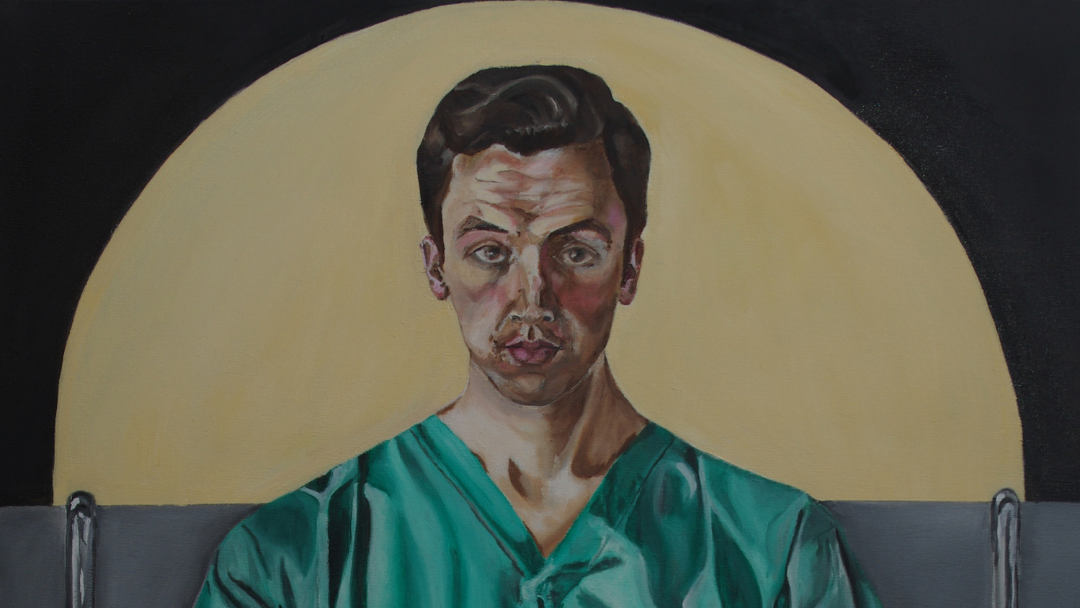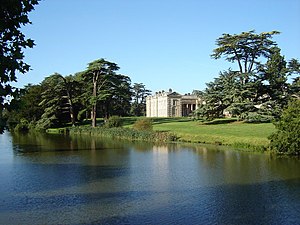
Finn Sheehan
Nestled cosily and luxuriously in a cleft within the gently undulating Warwickshire countryside, surrounded by farmland and not much else, Compton Verney is an interesting choice of location for a premier art gallery. On public transport, it requires a 45-minute taxi ride from the nearest train station at Banbury. So, whilst accessibility is not its USP, it boasts an array of permanent works and temporary exhibitions the equal of many of its more metropolitan cousins. It’s well worth the trip, especially as the collection includes to my particular delight a fabulous collection of Chinese works in bronze dating back to 1200 B.C, amongst a broader Chinese collection spanning 3000 years.
The home of the Verney family for some 200 years until hard times led to its sale and later on its descent into disrepair, it was bought in 1993 by the Peter Moores foundation and transformed with a vision of it as a home for great art. Abigail Viner, the Head of Exhibitions, Creative Programme & Audience Engagement, speaks passionately and knowledgeably about this vision, and the mission of the gallery: “It’s all about the audience, and how we work with artists and collections to engage with an audience and provide a high quality yet accessible experience. It’s about the intersection of art, nature, creativity and science.”
In terms of the nature angle, its remote location affords Compton Verney large surrounding grounds to play with. And the composition of this nature – the physical building, the gentle slopes down from it to the picturesque lake and the soaring Cedar trees the eye encounters on its way there – can seem as carefully curated as the art inside.
As I listen to Abigail speak, I crane my neck to look at a portrait of a young Verney scion high on the wall above me. Captured indulging in what was the standard – if much more exclusive – Instagrammy careful-image-curation of its day, the teenager features a solemn expression of gravitas whilst gently resting a noble hand on a wooden globe: a worldly teenager with international concerns. Of course he was. We’ve come a long way since then, yet not so far at all perhaps.

Anyway, it’s easy to be distracted by art at Compton Verney, but I’m here to see a retrospective of Sky Arts’ Portrait Artist of the Year, curated by Kathleen Soriano (who also happens to be one of the show’s three judges), and to hear about the effect the programme has had on the art scene and budding artist behaviour in the UK.
Art, like fashion and music, is notoriously hard to make a living from. “Most artists I know have to work, often teaching in art school,” says Kathleen. A compelling element of PAOTY is its ability to launch the career of a complete unknown. In this way it has become an important fixture in parts of the art community.
Many of the painters are already seasoned professionals, but as many are not, and there are several examples of amateur “contestants” who have successfully bridged the gap into the professional world. Nic Lord, the first ever winner, was working in the family business of model railways when he entered the show, painting the trains. Now he’s a commissioned portrait artist. Likewise, Tom Meades, who was just out of art school, has managed to make that step. And there are others. Kathleen acknowledges that the exposure of the program no doubt helped their careers, but TV exposure is by no means enough.
She emphasises that as with much in life, to make a career in art you have to work as hard to sell yourself and your art as you work on making it. “There’s no point making something unless you’re ready to shout about it. Art needs to be seen. Networking in the art community and the social side are critical. If you’re going to sit in your garret and make pictures and show them to no one else, maybe you’ll be discovered in 200 years! But if you want to be known in your lifetime you have to get out there and work it.”
And yes, Instagrammy careful-image-curation is key, all the more so during the pandemic. “Artists these days have to be really good at social media. Instagram is where it’s at. They work really hard at their Instagram accounts and getting their images out there.”
For a portrait painter it also pays to be personable, give a great customer service and get to know your subjects, to tease out their hidden narratives. Kathleen tells of how, to achieve the intimacy of his commissioned portrait of Graham Norton, previous winner Gareth Reid spent two weeks with him in West Cork, apparently making excellent use of the local pubs to develop a relationship with the subject, and even discovering that they were distantly related! This may or may not be unusual for that particular neck of the woods but certainly didn’t harm the chemistry or the output it led to.
Clearly though it’s not all about off-canvas talent. Kathleen stresses that it is equally important to be contributing to the development of art and pushing art forwards. “Be inspired, but don’t copy. Emotionally the viewer wants the same impact. Making us notice your work and feel something. Tantalise us about what you’re trying to tell us. But use innovation in the style you use to achieve this”. This is a mission that PAOTY tries to reward, and which a viewer of this exhibition will benefit from.
So as you might expect given PAOTY’s potential for an artist, and its stated intentions to reward innovative art, there is something of an Observer Effect in action, where the existence of PAOTY has changed the approach and styles of many budding artists who watch it, as they attempt to crack into the show and boost their career. There are websites that give advice on what type of paint to use and how to handle time constraints. For what it is worth Kathleen’s summarised advice for getting on is threefold: “do something standout (here she points to Phil Tyler’s painting of himself in a toilet, done soon after his father’s death), have a powerful narrative, or just paint a good, solid head”.
Interestingly, she explains how the most recent winner Calum Stevenson (whose glorious final commission of the violin prodigy Nicola Benedetti is sadly not here, though his beautifully observed, pastel-shaded portrayal of his girlfriend – which foreshadowed his precocious talent for the suggestion of light – is) altered his painting style in order to suit the shows constraints. Lord knows how precise and painstaking his work must have been beforehand (his submission apparently took 80 hours).
So, whether you like it or not (and I happen to), PAOTY now occupies a central role in the UK art scene. Now in its eighth year, it attracts a weekly audience of around 1.5 million and is repeated endlessly (such is the fate of all the finest or most popular shows nowadays). Each year amateurs and professionals from an entry pool of a thousand or more vie for the prize of a paid commission for a national art institution and a chance at national recognition.
It’s also notable for the fame of its sitters. And walking through the exhibition, the celebrity-infused presence of some of them is palpable, yet often not in the way that you expect. In the Graham Norton portrait Reid manages to capture a calmer, contemplative side to the Irishman known to millions as the genial chatterbox of his eponymous BBC, here at rest amongst the green fields of his homeland. Inhabiting a quieter power than the pure social energy he is famous for. You walk away from it minded that you know Norton a little better.
This kind of fresh take on a persona you felt you knew, similarly seen in portraits of Tom Jones, Kim Catrell, and many others, makes one realise that a benefit of using celebrities as sitters is how the televised painting process and outcome often acts to deconstruct the carefully curated public images of these people and, with only few exceptions (Nile Rogers remains indisputably Nile Rogers) show us something new of them. The power of the painter-subject dynamic – and no doubt the forgivable egotistical pleasure of being painted – can lower defences, and through the resulting artistic alchemy they can be humanised and at the same time elevated.
So yes, the exhibition is good. On an individual basis there is much to admire, and sometimes you can see where PAOTY’s mission to reward innovation in style – to “push the boundaries of what portraiture can do” – succeeds. Those who see Samira Addo’s take on Dame Zandra Rhodes will see bold, highly suggestive and powerful use of colour, teetering gloriously on the edge of abstraction.
The show is chock full of portraiture, and so whilst the quality of portrayal, clarity of narrative or distinctiveness of style doesn’t always hit the highest notes, that’s not really the point. The main triumph is to be found in experiencing it as a depiction of the sheer variety of expression possible. Like the TV show itself, it is a celebration of the discipline of portraiture, the humanity of its subjects, and of the unique voices that the artists, and ultimately all of us, have. An accessible moral, and a USP worth travelling for.
Sky Portrait of the Year runs until 5th June 2022